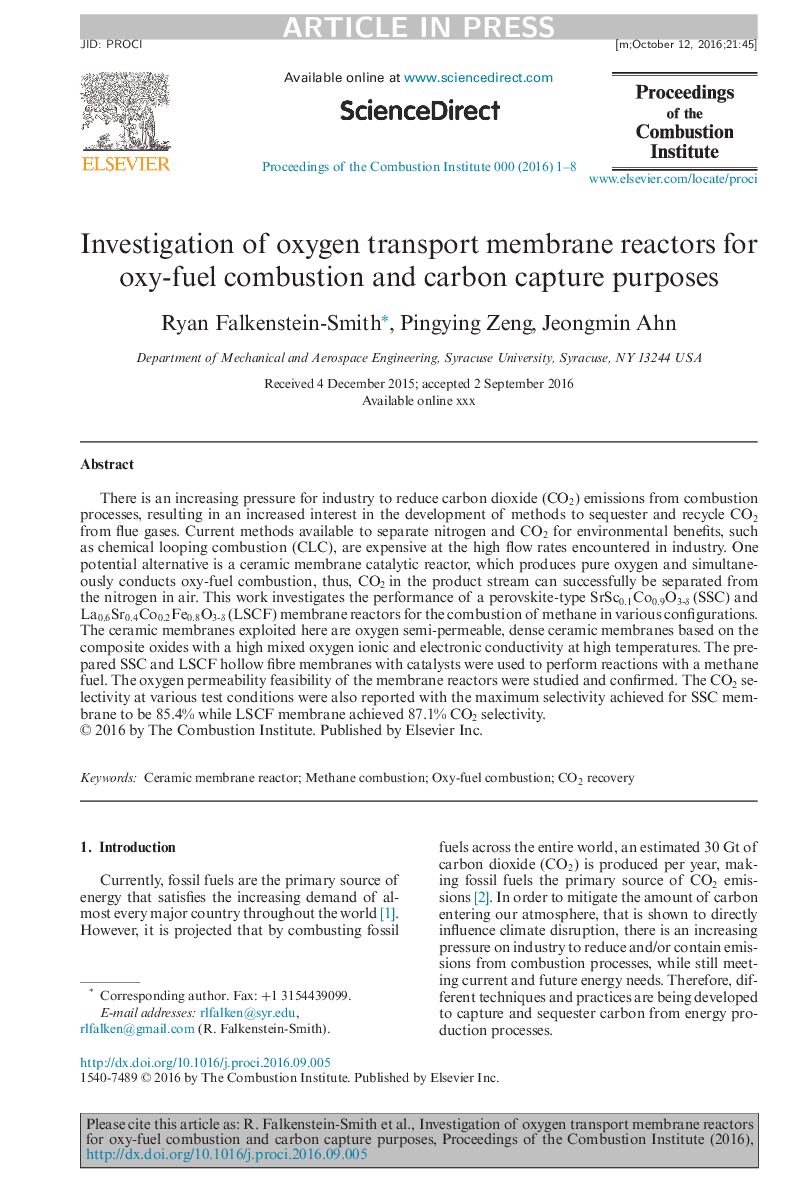| Article ID | Journal | Published Year | Pages | File Type |
|---|---|---|---|---|
| 4915456 | Proceedings of the Combustion Institute | 2017 | 8 Pages |
Abstract
There is an increasing pressure for industry to reduce carbon dioxide (CO2) emissions from combustion processes, resulting in an increased interest in the development of methods to sequester and recycle CO2 from flue gases. Current methods available to separate nitrogen and CO2 for environmental benefits, such as chemical looping combustion (CLC), are expensive at the high flow rates encountered in industry. One potential alternative is a ceramic membrane catalytic reactor, which produces pure oxygen and simultaneously conducts oxy-fuel combustion, thus, CO2 in the product stream can successfully be separated from the nitrogen in air. This work investigates the performance of a perovskite-type SrSc0.1Co0.9O3-δ (SSC) and La0.6Sr0.4Co0.2Fe0.8O3-δ (LSCF) membrane reactors for the combustion of methane in various configurations. The ceramic membranes exploited here are oxygen semi-permeable, dense ceramic membranes based on the composite oxides with a high mixed oxygen ionic and electronic conductivity at high temperatures. The prepared SSC and LSCF hollow fibre membranes with catalysts were used to perform reactions with a methane fuel. The oxygen permeability feasibility of the membrane reactors were studied and confirmed. The CO2 selectivity at various test conditions were also reported with the maximum selectivity achieved for SSC membrane to be 85.4% while LSCF membrane achieved 87.1% CO2 selectivity.
Related Topics
Physical Sciences and Engineering
Chemical Engineering
Chemical Engineering (General)
Authors
Ryan Falkenstein-Smith, Zeng Pingying, Ahn Jeongmin,
